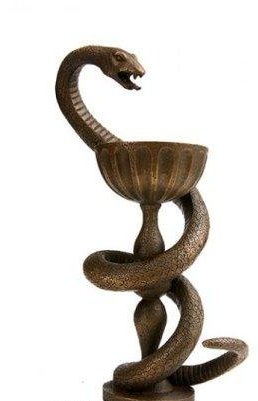The word ‘eczema’ is derived from the Greek meaning to ‘boil over’, describing the bubbly and hot appearance of active eczema. The words eczema and dermatitis mean the same, referring to a particular type of skin inflammation, which has potentially multiple different causes.
More specifically, atopic eczema refers to a very characteristic itchy skin rash, which typically starts in infancy or childhood. It tends to affect different parts of the skin at different stages of the person’s development, but at some point usually involves the skin creases (flexures) of the arms and legs.
It is more common in those with a family history of atopic eczema, asthma or hay fever. Eczema is a complex disease and multiple factors contribute to its development. However, genetic factors play a big role and various environmental triggers (for example, the house dust mite, bacterial toxins, hard water, climatic factors, air-borne allergens and pollution) may aggravate it.
Eczema tends to follow a fluctuating course. You can expect the child’s eczema to flare at times when he/she is ‘stressed’, for example, by teething pain.
It may flare when they are unwell with viral or bacterial infections and after having vaccinations. Anything that tends to dry the skin, eg. soaps, shampoo, bubble baths, detergents or chlorine will aggravate eczema. Contact with wool, synthetic clothing and animal hair will also aggravate it. In teenagers eczema may flare at exam times.
Atopic eczema usually starts on the scalp or cheeks in infants. It may even start as cradle cap. It later spreads to the limbs and body and in some children may be widespread for a time. At the crawling stage it is usually worst on the backs of the elbows and the fronts of the knees.
When the child is a little older the eczema settles in its characteristic location at the skin creases of the arms and legs. In teenagers and adults it may be worst on the hands.
The first principle of eczema treatment is to avoid those things that make eczema worse. Irritants like soaps and bubble bath should be avoided and substituted with an oily or emollient alternative.
Allergens like dog dander must be minimised and measures taken to reduce the house dust mite in the child’s environment.
Clothing and bed covers should be 100% cotton if possible. Heat and perspiration may make the itch intolerable.
Therefore the child’s environment should be kept cool. In particular, the bedroom should be well ventilated.
Emollients are products that moisturise and soften the dry skin, which is the central problem in atopic eczema. This therapy is a crucial part of your treatment plan for your child. Emollients are safe and can be used frequently. There are many choices on the market at present.
In general, when the skin is very dry an oil-based emollient, for example emulsifying ointment or paraffin gel, will be the most efficient.
As the skin improves a cream like Silcock’s base may be used. Emollients should be considered in three situations.
Firstly, they should be used as a moisturiser applied twice or three times daily all over. Care should be taken to apply emollients gently in the direction of the hair (to avoid irritating the hair follicles).
Secondly, they should be used instead of soap. Finally, emollients should be used in the bath, ideally on a daily basis.
The aim of bathing is to both grease and cleanse the skin. An excellent emollient bath may be prepared by dissolving two spoonfuls (dessert spoonfuls for child, table spoonfuls for adult) of emulsifying ointment in very hot water, whisking it up and adding it to the bath water.
There are also very effective, liquid bath additives available which may be more convenient to use.
Some of these contain an antiseptic which will help reduce the
numbers of bugs on the skin. Regular bathing with emollients is essential to help reduce secondary bacterial infection, – a common problem in atopic eczema.

